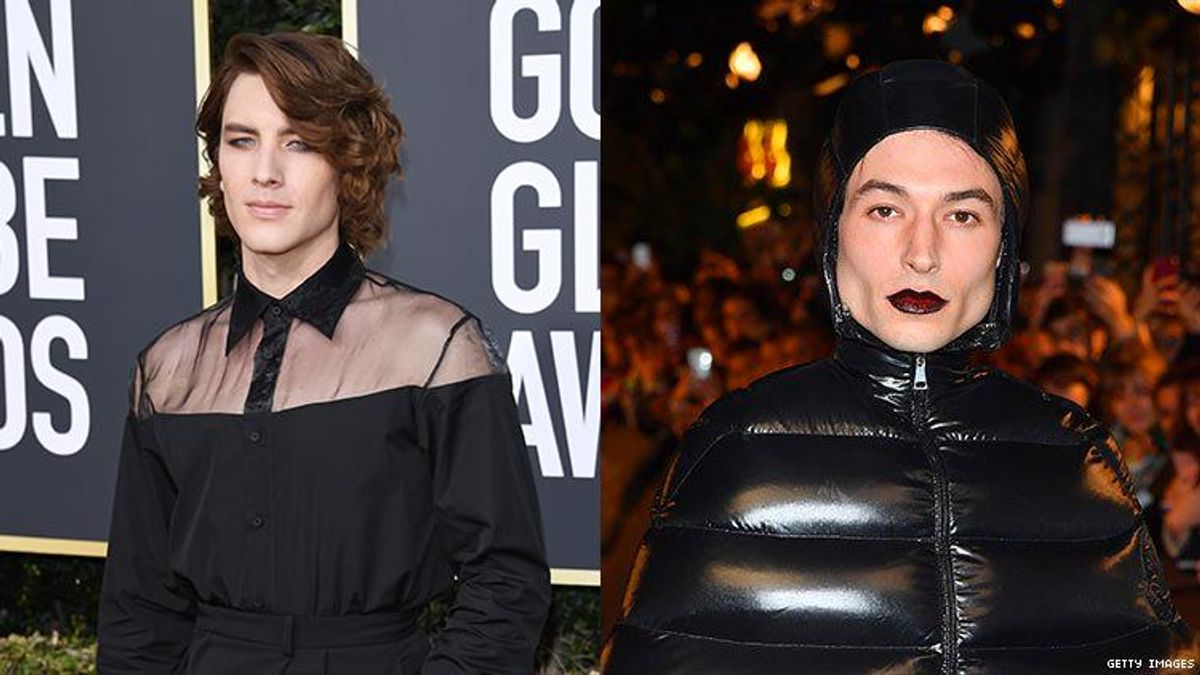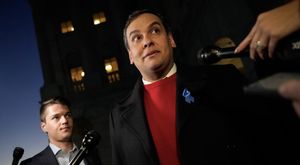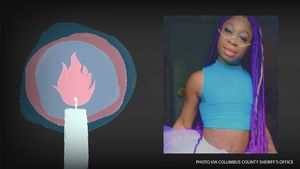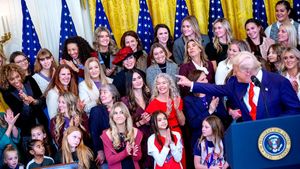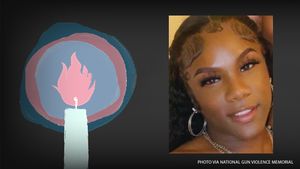Raviv Ullman is, apparently, "your newest gender fluid heartthrob." The former star of the 2004 Disney Channel series Phil of the Future is the subject of headlines as people stumbled onto his Instagram page to find unsung posts from holiday break of the actor in dresses and smeared lipstick. And just like that, we have another white, twink-like body championed as paragon of our genderful, genderless, and genderfluid future. But the masses of social media and beyond never seem to keep this same energy when the femme body isn't taut and white.
The first time I remember seeing someone as wondrously fabulous as I thought I could be in media and pop culture was Miss J. Alexander, America's Next Top Model's runway coach and resident diva extraordinaire. It was an early episode of the modeling competition show where he strutted down a sidewalk with the ferocity of Naomi Campbell to the cheers of contestants. He was secure and sure of himself -- tall and lanky, dark and lovely, femme and free before I knew what those words meant.
But in retrospect, I don't recall anyone really championing Miss J. for his gender-bending fashions or presentation. And by championing, I mean he was never lifted up as a sex(y) symbol because he blurred fashion lines. I could've just been too young at the time to remember or see any of it, but I know that society's current preoccupation with desiring gender fluidity hardly ever includes existences and bodies more like mine.
Ullman is the latest white, slender being in a long line of other white and slender beings exalted in such a way during what the New York Times called "the age of the twink" -- a declaration that further erases non-twink bodies that are more intently challenging masculinity norms. Just two months ago, actor Ezra Miller was featured in Playboy in a spread where he donned Bunny ears, fishnets, and size-14 heels. He has grabbed countless headlines for pushing the gendered bounds of fashion on red carpets, whether it's sporting Fenty Beauty, wearing the now-infamous hooded, black vinyl Moncler gown, or that Givenchy feathered cape.
Then there's actor and model Nico Tortorella who similarly has been applauded for wearing gowns and heels in public. So much so, in fact, that designer to the biggest stars Christian Siriano customized some looks for them. Tortorella even walked in Siriano's New York Fashion Week show last year.
Tortorella, like Miller, identifies as gender-fluid and has been placed in headlines with that epithet. Both have been lauded for their fashion choices in tandem, and later capitalized on it. Tortorella is a slightly different case in that they are a more vocal advocate for the community and is nonbinary, using they/them pronouns. And Ullman recently thanked LGBTQ gender benders for paving the way for him, "a cisgender straight white male" to explore, "while at the same time people in the trans and queer communities have been and continue to be persecuted worldwide just for living as their authentic selves." But how many Black and brown bodies have been afforded this same attention, when a Miller or an Ullman continues to take up this space?
Rapper and actor Jaden Smith comes to mind. The child of two of Hollywood's biggest names, Will Smith and Jada Pinkett Smith, hit social media in early 2015 rejecting the idea that dresses are "girl's clothes." Months later, he wore a dress to prom with Amandla Stenberg and soon became a featured model in a Louis Vuitton womenswear campaign.
And then there's Love, Simon and The Flash star Keiynan Lonsdale who, after coming out via Instagram in 2017, began embracing a more fluid gender presentation in public, wearing dresses and blouses to industry events.
Truly, all of the aforementioned masc-presenting folk have experienced some en masse applause and desiring for their sometimes gender-fluid presentations, and this critique is no slight on them and how they show up in the world from time to time. Rather, its a call to accountability for all those, in media and beyond, that have lifted them up as barrier breakers and convention challengers. It seems the bar is beneath the floorboard for them as women and trans femmes are rarely as easily regarded in public for doing the same.
Lest we forget the ire that came Janelle Monae's way, for example, for wearing only black and white pantsuits at the top of her career. Many labeled the act a stunt or gimmick even though the musician-actress was clear about it being a nod to the uniforms of her working class parents -- a truly political act.
But what, moreover, must be noted is that this newest set of inductees into the gender-fluid hall of fame is void of larger, disabled, or transfemme bodies. And you're not seeing it in this cultural moment of pop gender renaissance because we aren't afforded the same freedom to exist and thrive in public by audiences and the media.
There is a politic of desire at play when certain bodies and experiences are centered and others aren't. Meaning, it's only those who are deemed attractive and sexy and fuckable that are given the headline or allowed to walk the runway, or to simply live. (That's not to say bodies more like mine aren't desired, but rather the desire directed at us is saved for curtain-pulled bedrooms and the deepest, most dehumanizing fantasies in some of our potential sex partners' minds. But never in public.)
And when the broader mainstream does choose to recognize the perpetual slay of our differently-desired bodies, it's in service of their faddistic intentions. As writer-activist Alok Vaid-Menon said in a recent Instagram post, "we are cordoned off as we are invited: relegated to the runway, the gallery, the awareness week, the photo opp."
"I want something more constant, enduring, sustainable. less fickle & ephemeral," they continued. "The violence we endure, the lives that we live, the movements that we create, the looks that we serve, the art that we gift... happens 24/7."
And for those of us who can't take our femme identities off out of convenience -- or those of us who must conceal our true fabulosity for fear of safety -- Ullman, Miller, Tortorella, Smith and Lonsdale are not the future. They are merely a middle point, albeit a potentially necessary one, to a more inclusive vision. And society's infatuation with how gender fluidity manifests on their bodies is a disservice to actual nonbinary people who endure violence for similarly living out loud.
So, if I roll my eyes every time another cis, white, twinkish, or straight-passing person is deemed toxic masculinity's greatest foe or courageous for being femme in public or on set, give me a break. It ain't always easy doing the work when others get gold stars just for showing up.
